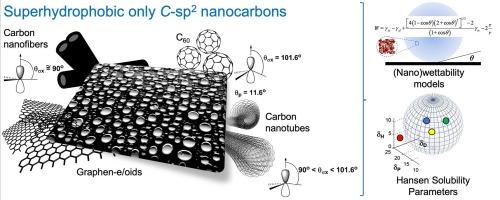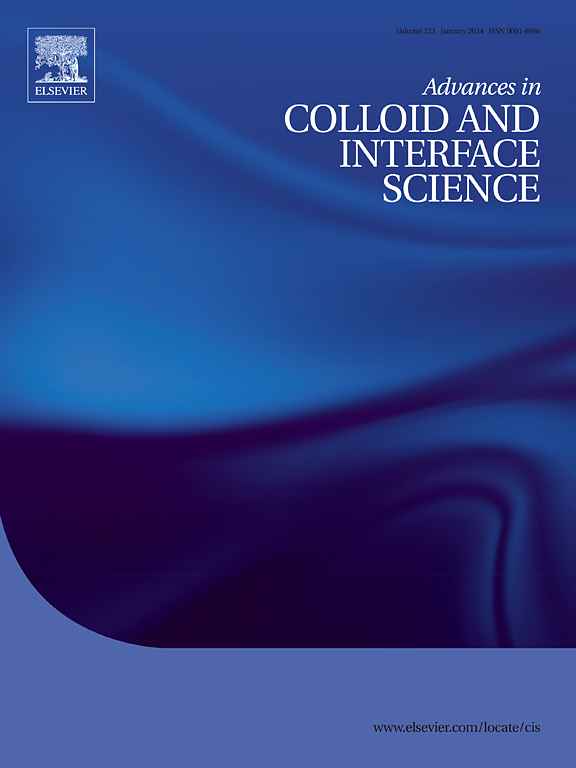Only-sp2 nanocarbon superhydrophobic materials – Synthesis and mechanisms of high-performance
IF 15.9
1区 化学
Q1 CHEMISTRY, PHYSICAL
引用次数: 0
Abstract
Superhydrophobic systems have fascinated the human kind since the earliest observations of the repellence of water droplets by biological systems. Currently, superhydrophobic materials (SHMs), often inspired by nature and engineered as thin coatings, become an important class of complex systems with numerous industrial implementations. The most important applications of SHMs cover waterproof, self-cleaning, anti−/deicing, anti-fogging, and catalytic systems/units, e.g., in textiles, civil and military engineering, automotive and space industry, and water-from-oil separating systems. In a few above areas, SHMs proved also to be tailorable as smart, i.e., reversibly stimuli-responsive and/or recyclable solutions. In all of those emerging fields, carbon – as the ‘sixth element’ – represents one of the most prospective components, also in the ‘only‑carbon’-based systems. The versatility of carbon (nano)materials, supported by their surface and morphology/topology tunability at from the nano- to macroscale, is vital in the manufacturing of high-performance SHMs. Here, we review only-sp2-hybridized nanocarbon SHMs, i.e., materials exhibiting water contact angle (WCA) >150°, from molecular design to synthesis and evaluation of their application-oriented properties, including WCA. The nanocarbons – pristine/as-made, (non-)covalently functionalized and in a form of carbon‑carbon composites – are analyzed according to their dimensionality: 0D fullerenes, 1D carbon nanotubes (CNTs), 2D graphene, and 3D carbon nanofibers (CNFs). Importantly, this review intends to provide premises toward novel sp2-nanocarbon SHMs, indicating nanowettability and Hansen Solubility Parameters the key ones.

Only-sp2 纳米碳超疏水材料--高性能的合成与机理。
自最早观察到生物系统排斥水滴以来,超疏水性系统就一直吸引着人类。目前,超疏水性材料(SHMs)通常受到自然界的启发,被设计成薄涂层,成为一类重要的复杂系统,在工业领域得到广泛应用。超疏水材料最重要的应用领域包括防水、自清洁、防/除冰、防雾和催化系统/单元,如纺织品、民用和军事工程、汽车和航天工业以及油水分离系统。事实证明,在上述几个领域,SHMs 还可以作为智能解决方案,即可逆刺激响应和/或可回收解决方案。在所有这些新兴领域中,碳--作为 "第六元素"--是最有前景的成分之一,在 "纯碳 "系统中也是如此。从纳米到宏观尺度,碳(纳米)材料的表面和形态/拓扑可调性支持了其多功能性,这对于制造高性能 SHM 至关重要。在此,我们综述了仅sp2-杂化的纳米碳 SHMs,即表现出水接触角(WCA)>150°的材料,从分子设计到合成,以及对其应用导向特性(包括 WCA)的评估。本综述根据纳米碳的维度(0D 富勒烯、1D 碳纳米管 (CNTs)、2D 石墨烯和 3D 碳纳米纤维 (CNFs))对其进行了分析,这些纳米碳包括棱柱形碳/人造碳、(非)共价官能化碳以及碳碳复合材料。重要的是,本综述旨在为新型 sp2 纳米碳 SHM 提供前提条件,并指出纳米润湿性和汉森溶解度参数是关键因素。
本文章由计算机程序翻译,如有差异,请以英文原文为准。
求助全文
约1分钟内获得全文
求助全文
来源期刊
CiteScore
28.50
自引率
2.60%
发文量
175
审稿时长
31 days
期刊介绍:
"Advances in Colloid and Interface Science" is an international journal that focuses on experimental and theoretical developments in interfacial and colloidal phenomena. The journal covers a wide range of disciplines including biology, chemistry, physics, and technology.
The journal accepts review articles on any topic within the scope of colloid and interface science. These articles should provide an in-depth analysis of the subject matter, offering a critical review of the current state of the field. The author's informed opinion on the topic should also be included. The manuscript should compare and contrast ideas found in the reviewed literature and address the limitations of these ideas.
Typically, the articles published in this journal are written by recognized experts in the field.

 求助内容:
求助内容: 应助结果提醒方式:
应助结果提醒方式:


